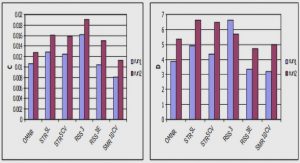Get Complete Project Material File(s) Now! »
The international dimension of copyright law
The regional and national aspects of copyright law are essential since most regions and countries have their own legislation as to the subject matter of copyright law.24 However, it is important to recognise the international legal sources, as there is an international dimen-sion of copyright law. Multilateral agreements are namely important to come around the – in terms of copyright law – fundamental principle of territoriality. That principle means that national legislation reaches no further than its borders.25 Without multilateral agree-ments, it is hard for authors of a certain country to ensure that the protection of their works is valid on a global scale. Due to the simplicity of distributing works globally via dif-ferent types of media platforms, the need for copyright protection is global rather than na-tional. International copyright law therefore aims to harmonise copyright regimes around the world.26 elements of copyright law, that is to say the Berne Convention27, the Universal Copyright Convention28 and the WIPO Treaties29.
International legal acts
The Berne Convention is perhaps the most notable multilateral copyright agreement. As of January 15, 2014, as many as 167 countries have ratified the Berne Convention.30 These 24 Goldstein, Paul & Hugenholtz, P. Bernt, International copyright: principles, law, and practice, 3rd ed., Oxford Uni-versity Press, New York, 2013, p. 10. 27 Berne Convention for the Protection for Literary and Artistic Works of September 9, 1886 and last amend-ed at Paris on September 28, 1979 (in the following referred to as: Berne Convention).
28 Universal Copyright Convention of 6 September 1952, Geneva (in the following referred to as: Universal Copyright Convention). countries form a union in respect of authors’ protection of literary and artistic works.31 An-other important copyright agreement is the Universal Copyright Convention, since it regu-lates copyright relations between participating countries and non-participating countries of the Berne Convention. The Universal Copyright Convention is independent in relation to the Berne Convention but if conflicts occur between those acts, the latter one prevails.32
The last revision of the Berne Convention took place in Paris 1971. Despite the revision, some issues remained unsolved and in 1989, the World Intellectual Property Organisation (WIPO) Governing Bodies consequently decided to prepare a potential legal act addressing the issues not governed by the Berne Convention as well as the problem of digital exploita-tion of copyrighted works.33 Seven years later – in other words in 1996 – representatives of about 120 countries agreed upon the WIPO Treaties, that is to say the WIPO Copyright Treaty and the WIPO Performance and Phonograms Treaty.34 When studying legal sources related to the InfoSoc Directive, the WIPO Copyright Treaty is probably the most im-portant one since the InfoSoc Directive actually aimed to implement the rules provided for in that treaty into the EU law.35 The next chapter further explains the relationship between these legal acts.
1 Introduction
1.1 Preface .
1.2 Purpose and delimitation
1.3 Material and method
1.4 Outline
1.5 Terminology
2 International and EU copyright law
2.1 International copyright law
2.2 EU copyright law
2.3 Summary
3 Communication to the public
3.1 Definition of the concept .
3.2 The concept under international treaties
3.3 The concept under the InfoSoc Directive
3.4 Summary
4 Examination: Case law
4.1 Broadcasting in “private” places
4.2 Broadcasting in “public” places
4.3 Broadcasting of graphic user interfaces
4.4 Live performances
4.5 Streaming
5 Final remarks
5.1 Communications inside and outside the scope
5.2 The interpretation of the provision
5.3 The provision in light of a legal certainty point of view
6 Conclusion
List of references
GET THE COMPLETE PROJECT
Communication to the public A study in light of Article 3(1) of the InfoSoc Directive (2001/29/EC)





